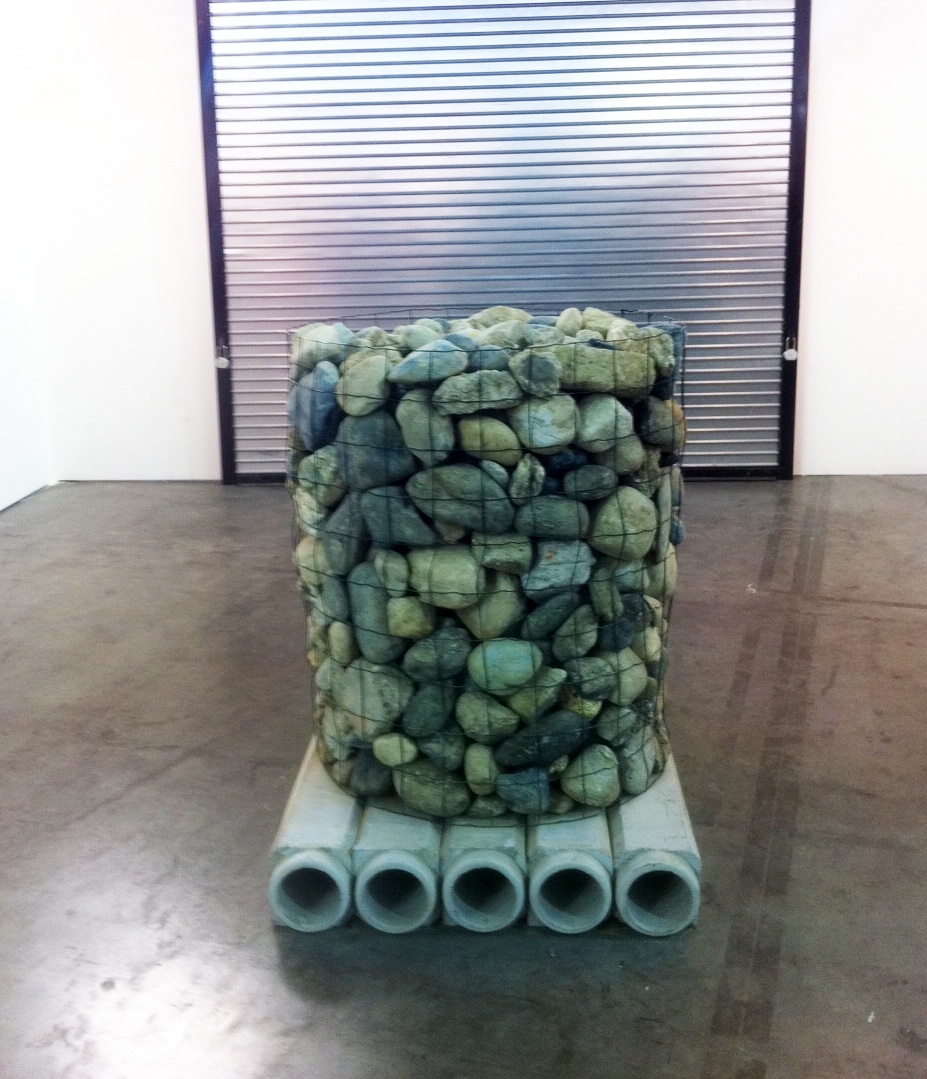Artissima is a fair that has taken the idea of the ‘curated’ section and run with it as far as possible. Usually these sections are smaller, discrete add-ons – think of Art Statements at Art Basel or Focus at Frieze. At Artissima however, central stage is given to two sections, ‘Present Future’ and ‘Back to the Future’ each located through the middle of the fair. The face that the fair wants to present is curatorial and the business of catering to local collectors is discretely pushed to the sides.
In ‘Present Future’, a section about emerging artists, Charles Harlan at New York’s JTT and Alessandro Balteo Yazbeck at Dubai’s Green Art stood out. Harlan makes poetically mute sculptural works which have a frisson of specificity, for example in his use of New York electrical piping. Sparse elements – rocks, culverts, a steel shutter – are arranged with a precision that is at odds with their ordinariness.
The once almost-exclusively Italian fair has quietly embraced an international, albeit non-blue-chip, outlook
Yazbeck stands at the other end of things, making politically charged work interweaved with visual commentary on the history of modern art. So at Green Art’s stand, a billboard poster work presented a schematic rendering of the delivery capabilities of the Israeli Nuclear Arsenal since 1967 within what looked like a take on hard-edged abstraction.
‘Present Future’ lead directly onto ‘Back to the Future’, a section for older artists who are being re-discovered. Kavi Gupta’s presented McArthur Binion, an African-American abstract painter who was in the second ever Artists’ Space exhibition in 1973 (along with Jonathan Borofsky and Mary Obering) before falling off the radar for almost 40 years.
Binion’s works are obsessive and minimalist, the finished works the result of pressing his crayons hard into wooden panels, a deliberate restaging of the dull manual work that was the lot of the southern, rural poor. Henri Chopin typewriter poems at Richard Saltoun Gallery was a counterpoint, where the same intensity of an artist repetitively attacking the surface, albeit this time with a typewriter, was evident in the Chopin’s concrete poetry pieces.
The main section of the fair flanked these two curated sections, and arguably was a little marginalised. Eddie Peake, Martin Creed and Prem Sahib made Lorcan O’Neill the most on-trend stand. Teresa Margolles did something horrifying with blood on abstract canvases at Peter Kilchmann. The young artist Younes Ali-Baba continued his series of deconstructed national anthem pieces with his film ‘Donkey’ at Morocco’s Voice Gallery.
What was most noticeable was that Artissima, once an almost-exclusively Italian fair, has quietly embraced an international, albeit non-blue-chip outlook, and most of the interesting works were at those stands. It is also now clearly keen to be seen as a ‘curated’ fair, with its trumpeting of various forms of the ‘future’ in its solo sections. The result is curiously satisfying. The local collectors still have the Italian galleries to ferret around in (there were some stupendously bad Gormley’s littering a good portion of Continua’s stand) and the rest of us have rather high-minded presentation of solo stands to meander around before heading to Turin’s restaurants to sample this season’s truffles – Artissima’s other great selling point.
